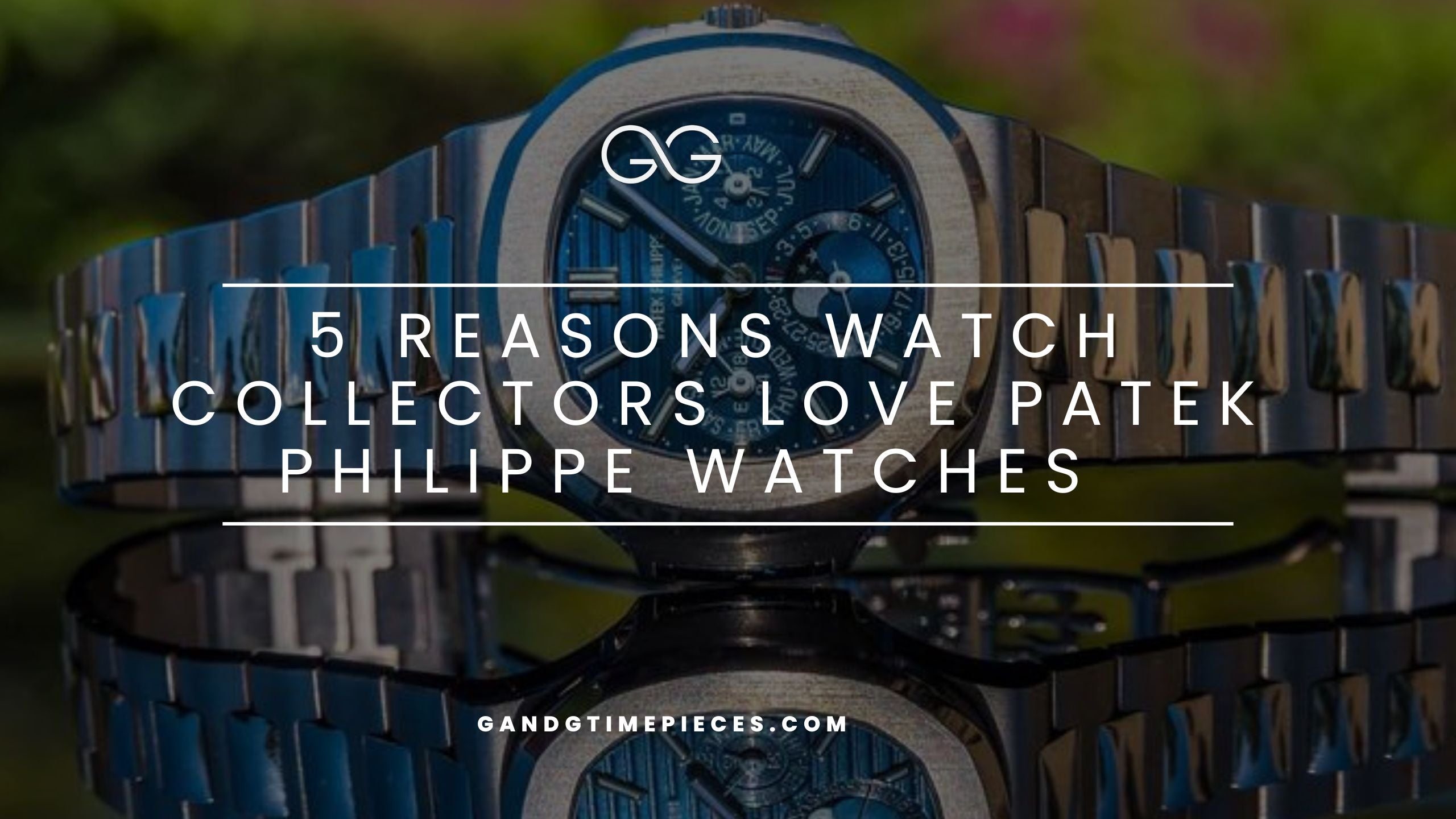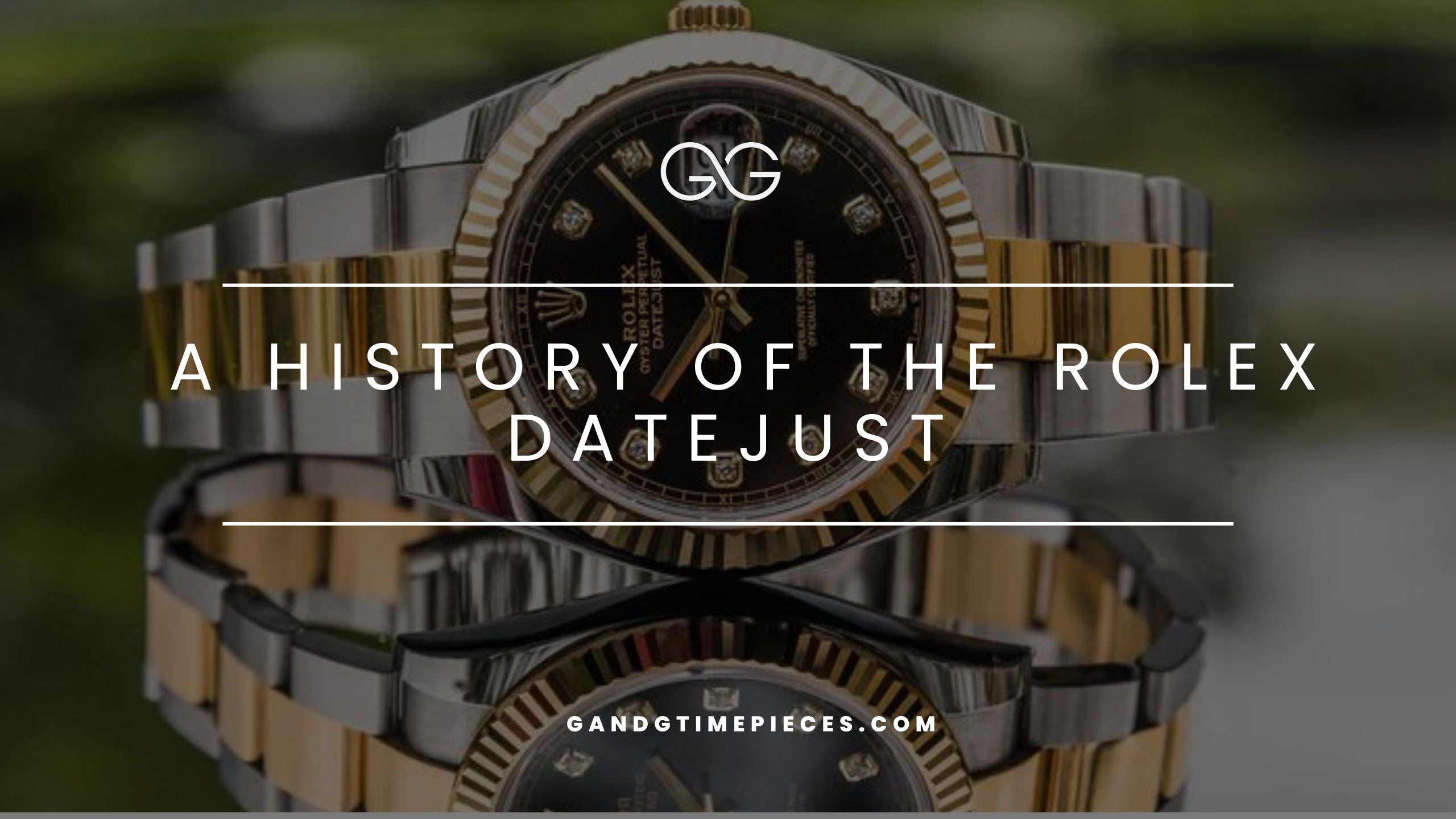Luxury is subjective, but certain qualities define true luxury when it comes to watches.
Read this article to learn about those qualities and other factors that define a luxury watch.
What Qualities Define a Luxury Watch?
High Quality Materials
Crafting a watch from the finest materials is necessary to consider it truly luxurious. Luxury timepieces commonly use stainless steel, gold, platinum, and high-grade leather.
Stainless Steel
Stainless steel is a popular choice for its durability and affordability.
Higher-end stainless steel watches use surgical-grade or 904L steel, which has higher chromium content, enhancing corrosion resistance.
Gold
18K rose, white, or yellow gold offers a more opulent look and feel but at a much higher cost.
Platinum is the most precious metal used and provides an understated elegance.

High Grade Leather
Luxury watch straps use fine leathers like alligator, crocodile, and calfskin.
Alligator and crocodile leathers are rare and expensive but also durable and water-resistant. Premium calfskin is softer, though less durable.
Sapphire Crystal
Sapphire crystal is the preferred glass for luxury watches.
Nearly scratch-proof, sapphire crystal provides a clear view of intricate watch faces and any gemstone accents.
Lesser quality mineral glass scratches more easily.
Gemstones
Luxury timepieces also incorporate precious and semi-precious gemstones, including diamonds, rubies, emeralds, and opals.
Gemstone accents on watches, especially diamond bezels and dials, dramatically increase the price and prestige.
Precise and Complicated Movements
The most prestigious luxury watches incorporate complicated movements with additional functions beyond just telling the hour and minute.
These include chronographs for measuring intervals of time, perpetual calendars that account for the irregular lengths of months, and tourbillons that increase accuracy by negating the effects of gravity on the escapement.
Producing these Grand Complication watches requires master craftsmen and hundreds of tiny, moving parts.
The precision of a luxury watch movement is also unparalleled.
Fast movements that tick at 36,000 vibrations per hour (VPH) or more and can last 3-7 days without winding are common.
Some brands use exotic materials like silicon for the escapement and mainspring to minimize friction and increase accuracy over time.
Master watchmakers often make adjustments manually during assembly and testing.
Scarcity and Exclusivity
The limited availability of luxury watches contributes greatly to their prestige and desirability.
Having a rare model of something shows that you possess something unique, especially if only a small number are available.

Some brands make their watches more unique by giving them exclusive names that become infamous
High Demand and Resale Value
The scarcity of luxury watches also means that demand far outstrips supply. Not only do they tend to sell out quickly upon release, but they also frequently gain value over time as collectibles.
Many people see luxury watches as a solid investment that they can enjoy for generations for this reason.
Prestigious Accolades
The most exclusive luxury watches regularly receive honors at distinguished design competitions like the Grand Prix d'Horlogerie de Genève.
Winning one of these prestigious awards is a mark of watch superiority and improves the brand's status.
Collectors often highly seek after models that experts recognize as the peak of watch design.
Brand Prestige
Luxury watches come from brands with a long tradition of producing high-quality timepieces, such as Patek Philippe or Audemars Piguet.
These esteemed brands are synonymous with status, affluence and the finest watchmaking tradition.
Having a famous model from these brands adds prestige and increases the value of the item as a luxury.
Consider Watch Materials
The materials used in a luxury watch greatly impact the quality, durability, and overall esthetic of the timepiece. Some of the most common materials used in luxury watches are:
Precious Metals
Luxury watches typically use precious metals for the case and band, like yellow gold, rose gold, white gold, and platinum.
Gold and platinum are highly durable and scratch-resistant, though platinum is the most durable. Gold is also available in different karats, like 18K or 24K, indicating the purity of the gold.

Higher karats mean higher purity and softness. Rose gold has a distinctive pink color from its copper alloy.
Stainless Steel
For a more affordable yet high-quality option, stainless steel is a great choice. Stainless steel watches have a sleek, modern look and are very durable and water-resistant.
Stainless steel alloys contain chromium, which helps prevent corrosion and rust. Many luxury brands like TAG Heuer, Omega, and Rolex offer stainless steel models.
Titanium
Titanium is a lightweight yet extremely durable material used in some luxury sport watches. Titanium watches have an industrial look and feel and are ideal for an active lifestyle.
Titanium is highly scratch- and corrosion-resistant but more affordable than precious metals. Some companies that use titanium in their watches include IWC, Omega, and Panerai.
Leather or Canvas
For the watch band, high-quality leather, canvas, or NATO straps are popular options. Leather straps are classic but may not handle moisture well.
Canvas and NATO straps are extremely durable and breathable but more casual in style.
Interchangeable straps allow you to change up the look of your watch for different occasions.
Why Can't Everyone Own a Luxury Watch?
Luxury watches are expensive for as they are made of high-quality, rare materials that aren’t cheap to source or craft.
Precious metals like gold, platinum, and palladium and gems like diamonds drive up the cost. These watches also require expert craftsmanship to assemble the intricate mechanisms and details, which also contributes to the higher price tag.
On top of the physical components, luxury watches hold their value well over time due to their prestigious brand names and limited production runs.
Luxury watch brands like Patek Philippe, Audemars Piguet, and Richard Mille can sometimes only make a few hundred watches each year.
They can charge more and their watches often become more valuable when resold because of their exclusivity.
Other Factors
• High demand - There are only so many watches produced each year, and far more people who desire them. Simple supply and demand.
• Status symbols - Luxury watches have become status symbols to signify wealth and success. The ability to own one shows you have “made it.”
• Investment pieces - Luxury timepieces are seen by many as investments due to their potential to gain value over time. This speculative demand also drives prices up.
• Tradition and craft - Many luxury watch brands have a long, storied history of traditional watchmaking. You’re paying for the brand’s heritage, reputation, and craftsmanship honed over generations.
• Exclusivity - There is an allure to owning something few others can have. Luxury watch brands capitalize on this desire for exclusivity and scarcity.
Conclusion
Luxury watches define themselves through their high quality materials, intricate movements, and exclusivity.
Made from high quality materials and intricate designs, these watches represent more than just telling time. They symbolize prestige, value, and centuries of skilled workmanship.




